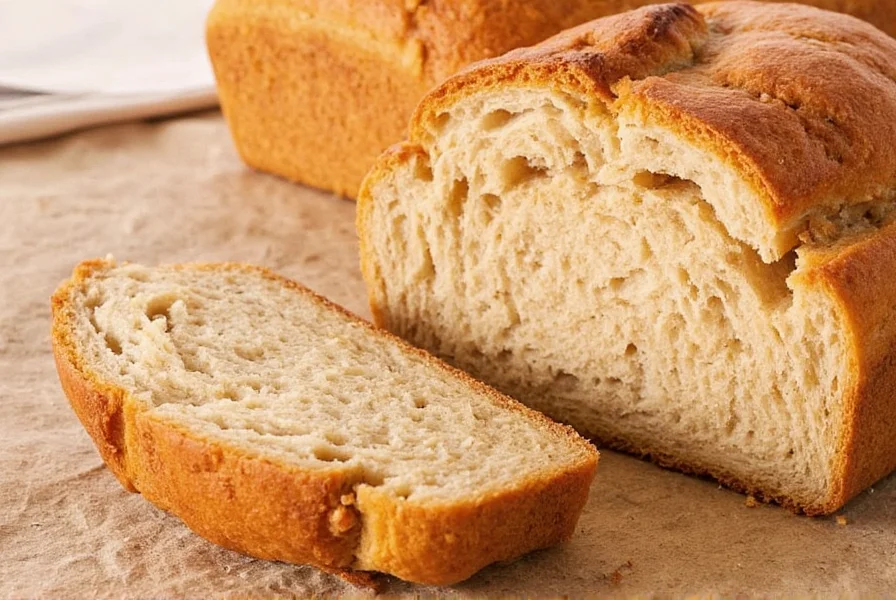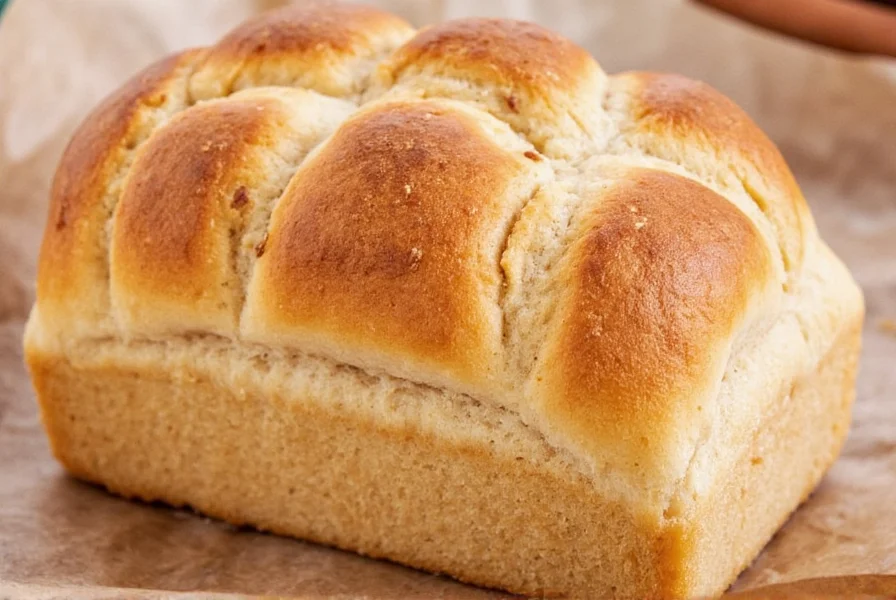Making cinnamon bread in a bread machine is not only possible but can yield consistently excellent results when you follow the proper technique. Unlike traditional oven-baked versions, bread machine cinnamon bread requires specific ingredient sequencing and cycle selection to prevent common issues like dense texture or uneven cinnamon distribution. The key advantage of using a bread machine is the consistent kneading and controlled rising environment, which helps develop the perfect crumb structure for this sweet, spiced bread.

Why Bread Machines Excel for Cinnamon Bread
Bread machines provide several advantages for cinnamon bread production that home bakers often overlook. The controlled environment ensures consistent dough temperature during kneading and rising phases, which is critical for proper gluten development in sweet doughs. Unlike manual methods where cinnamon can sink during rising, the bread machine's timed ingredient dispenser (on select models) or strategic layering technique prevents this common issue. Additionally, the machine's automatic baking cycle eliminates guesswork about when the bread has reached optimal internal temperature (190°F/88°C), preventing underbaked or overbaked results.
Critical Considerations for Bread Machine Cinnamon Bread
Before diving into the recipe, understand these essential factors that make or break your cinnamon bread machine experience:
| Factor | Standard Recipe | Bread Machine Adaptation |
|---|---|---|
| Liquid Temperature | Room temperature | Slightly warm (80-85°F/27-29°C) |
| Yeast Contact | Mixed directly with flour | Separated from sweeteners until mixing begins |
| Cinnamon Addition | Often mixed throughout dough | Layered during second knead cycle |
| Baking Cycle | Conventional oven setting | Basic/White cycle with light crust setting |
Perfect Bread Machine Cinnamon Bread Recipe
This tested recipe yields one perfect 1.5-pound loaf with distinct cinnamon swirls and a tender crumb. The ingredient order follows bread machine best practices to ensure proper yeast activation and dough development.
Ingredients
- ¾ cup (180ml) whole milk, warmed to 80°F (27°C)
- 2 tablespoons (28g) unsalted butter, softened
- 2 tablespoons (25g) granulated sugar
- 1 large egg, room temperature
- 1 ½ teaspoons salt
- 3 cups (360g) bread flour
- 2 ¼ teaspoons (7g) active dry yeast
- ¼ cup (55g) packed light brown sugar
- 2 tablespoons ground cinnamon
- 2 tablespoons melted butter (for swirling)
Step-by-Step Instructions
- Prepare the bread machine pan: Lightly grease the bread pan with non-stick spray.
- Add wet ingredients first: Pour warm milk, softened butter, sugar, egg, and salt into the pan in that order.
- Add dry ingredients: Add bread flour, making a well in the center. Place yeast in the well (don't let it touch liquids).
- First knead cycle: Select the dough cycle and start the machine. After 5 minutes of kneading, check dough consistency.
- Adjust dough if needed: If too sticky, add 1 tbsp flour; if too dry, add 1 tsp milk. Dough should form a smooth ball.
- Prepare cinnamon mixture: While dough kneads, combine brown sugar and cinnamon in a small bowl.
- Add cinnamon during second knead: When the machine beeps for add-ins (usually after first rise), sprinkle cinnamon mixture evenly over dough.
- Complete dough cycle: Allow machine to finish the dough cycle (about 2 hours total).
- Shape the loaf: After the cycle ends, remove dough, roll into 9x12 inch rectangle, brush with melted butter, and sprinkle with remaining cinnamon mixture. Roll tightly and place seam-side down in pan.
- Final bake: Select basic/white bread cycle with light crust setting. Remove immediately when cycle completes.
Troubleshooting Common Cinnamon Bread Machine Issues
Even with perfect recipes, bread machines can present challenges. Here's how to solve the most frequent cinnamon bread problems:
Dense or Gummy Texture
This typically occurs when too much liquid is used or the yeast was compromised. Always measure liquids with a glass measuring cup (not the bread machine's cup), and test yeast freshness before starting. If your kitchen is cool, increase liquid temperature to 85°F (29°C) to activate yeast properly. For high-altitude baking (above 3,000 feet), reduce yeast by ¼ teaspoon and increase liquid by 2 tablespoons.
Cinnamon Sinking to Bottom
Adding cinnamon during the second knead cycle prevents this issue. The initial dough development creates structure that holds the cinnamon in place. If using a machine without an add-in signal, pause the machine after 15 minutes of kneading, sprinkle cinnamon mixture evenly over dough, then resume. Never add cinnamon with initial ingredients as it inhibits gluten development.
Overbrowning Crust
Sweet doughs like cinnamon bread brown faster due to sugar content. Always select the light crust setting for sweet bread recipes. If your machine lacks this option, remove the bread 10 minutes before the cycle ends and finish baking in a conventional oven at 325°F (163°C). The bread is done when internal temperature reaches 190°F (88°C).
Delicious Variations to Try
Once you've mastered the basic recipe, experiment with these popular cinnamon bread machine variations:
Cinnamon Raisin Bread
Add ½ cup raisins during the second knead cycle. For extra flavor, soak raisins in warm water for 10 minutes and pat dry before adding. The moisture from wet raisins can make dough too sticky if added directly.
Streusel-Topped Cinnamon Bread
Before the final bake cycle, sprinkle this simple streusel over shaped dough: 2 tbsp flour, 2 tbsp brown sugar, 1 tbsp cold butter, and ½ tsp cinnamon mixed until crumbly. This creates a delightful crunchy topping that complements the soft interior.
Gluten-Free Adaptation
Substitute bread flour with a quality gluten-free bread flour blend (not all-purpose GF flour). Add 1 teaspoon xanthan gum if not included in the blend. Increase liquid by 1-2 tablespoons as GF flours absorb more moisture. Select the gluten-free cycle if available, or use the basic cycle with an additional 10 minutes of baking time.
Storage and Serving Recommendations
For optimal texture, allow bread to cool completely (at least 2 hours) before slicing. The residual heat continues cooking the interior, and slicing too soon causes gumminess. Store cooled bread in an airtight container at room temperature for up to 3 days. For longer storage, wrap tightly in plastic wrap and freeze for up to 3 months. Thaw at room temperature for 2 hours before serving.
Serve slices toasted with additional butter for enhanced flavor. The bread also makes excellent French toast—use day-old slices for best results as they absorb the egg mixture more effectively without becoming soggy.
Frequently Asked Questions
Can I use my regular cinnamon bread recipe in a bread machine?
Most traditional cinnamon bread recipes require adaptation for bread machines. Key adjustments include reducing liquid by 1-2 tablespoons (bread machines create steam), separating yeast from sweeteners initially, and adding cinnamon during the second knead cycle. Our tested recipe addresses all these factors specifically for bread machine success.
Why does my cinnamon bread come out dense in the bread machine?
Dense texture usually results from too much liquid, expired yeast, or incorrect ingredient order. Always measure liquids precisely, test yeast freshness by mixing with warm water and sugar (should foam in 5-10 minutes), and follow the proper layering sequence: liquids first, then dry ingredients with yeast isolated from sweeteners. High humidity environments may require reducing liquid by 1 tablespoon.
What's the best bread machine setting for cinnamon bread?
Use the basic or white bread cycle with light crust setting. Sweet doughs like cinnamon bread contain sugar that accelerates browning, so the light crust setting prevents overbaking. Avoid the sweet bread cycle as it typically adds extra kneading time that can overdevelop the dough, resulting in a tough texture. The total cycle should run 3-4 hours depending on your machine model.
Can I add nuts or raisins to bread machine cinnamon bread?
Yes, but add them during the second knead cycle (when the machine beeps for add-ins). Use ½ cup total of chopped nuts or soaked raisins. Excessive add-ins can interfere with dough structure. For nuts, toast them first to enhance flavor and reduce moisture content. Pat soaked raisins dry before adding to prevent excess moisture that could make dough too sticky.
How do I prevent the cinnamon from sinking to the bottom?
The key is adding cinnamon during the second knead cycle after the initial gluten structure has formed. Never mix cinnamon with initial ingredients. If your machine lacks an add-in signal, pause after 15 minutes of kneading, sprinkle cinnamon mixture evenly over dough, then resume. Using a cinnamon-sugar mixture with slightly melted butter (not liquid) helps it adhere to the dough surface during rolling.











 浙公网安备
33010002000092号
浙公网安备
33010002000092号 浙B2-20120091-4
浙B2-20120091-4